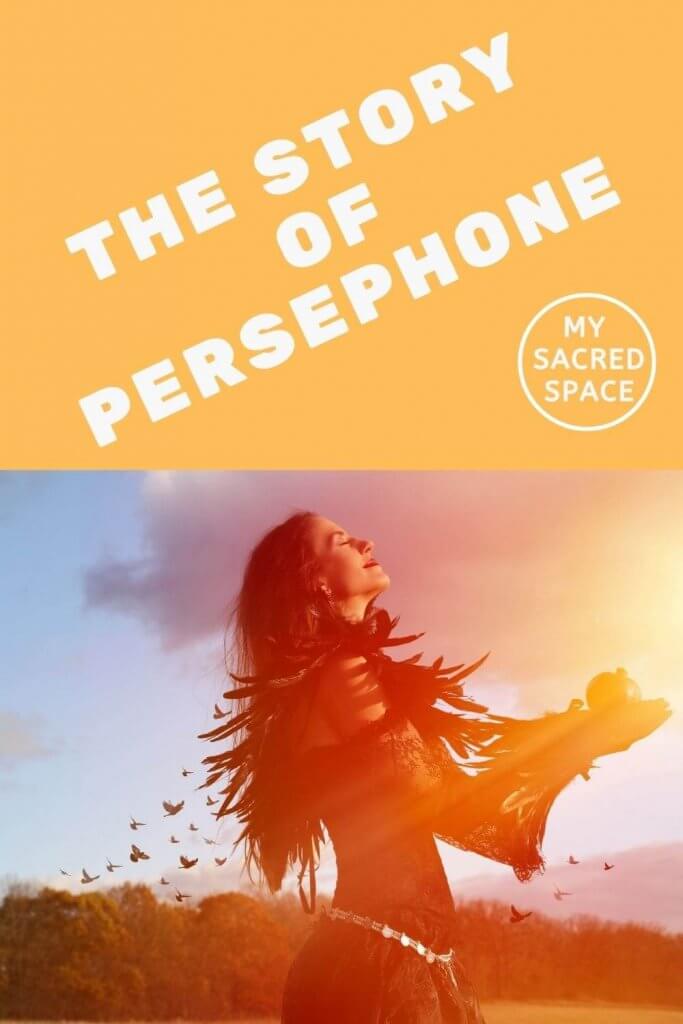When we are talking about Ostara, we are talking about the Ostara Goddess of spring. As its name already vibrates this magical energy, Ostara is a Goddess full of magic. In this article, we will dive deeper.
After reading these two books, I have written a series of articles related to Ostara:
Celebrating the Seasons of Life: Samhain to Ostara: Lore, Rituals, Activities, and Symbols by Ashleen O’Gaea (check here for the UK and here for the US)
Ostara: Customs, Spells & Rituals for the Rites of Spring by Edain McCoy (check here for the UK and here for the US)
Many of the ideas in these articles are inspired by these two books, which I am grateful to the writers.
The four articles I wrote about the Ostara are:
Check them and connect to this magical time of the year.
What is the celebration of Ostara?

At the equator, at the time of the spring and autumnal equinoxes, the length of day and night are equal.
In Latin, equinox means equal (equi) night (nox).
People have known that light and darkness balance each other at the equinox for thousands of years.
This balance, and, by extension, the balance of other aspects of our lives, have long been a focus of Spring rituals.
Ostara is the celebration of this balance time in spring.
This balance, and the balance of other aspects of our lives, has long been the focus of spring rituals.
Ostara is the celebration of this time of balance in spring.
At Ostara, we all need to rebalance ourselves.
Since fertility is now manifested in the growth of plants and the mating of animals, some Wiccan traditions assume that the goddess and god are married at Ostara.
Other traditions save the wedding for Beltane.
Ostara is in the middle of spring, and although in some areas it is still too cool for the growth of plants, summer is coming, and we must make preparations.
Which day is Ostara, and how long does Ostara last?

Although the equinox is usually celebrated on March 20, the exact date varies from year to year.
The reason for this is a slight discrepancy between the Gregorian calendar and the actual speed of the Earth’s rotation around the Sun.
The equinox also occurs at different times.
So, depending on where you live, it may be one day before or after the date given in the calendar.
For this reason, it can be somewhere between March 19 to March 21.
Who celebrates Ostara?

Ostara is a Wiccan holiday and one of their eight Sabbaths.
Ostara is named after a Teutonic goddess of spring.
The Asatru, the inheritors of the pagan traditions of the north (including the Teutonic and Germanic as well as Norse), celebrate a wheel similar to that of Wicca.
Where does Ostara come from?

Archaeologists estimate that the two equinoxes and the two solstices, which quarter our solar year, celebrated religious festivals in tribal and clan communities as early as 12,000 years ago.
Much of the origins of Ostara traditions come from Europe, where a variety knows this festival of names, including Eostre’s Day, Spring Equinox, Alban Eiber, Bacchanalia, Lady Day, and Jack in the Green Day.
It has also been celebrated under names honoring other springtime deities worldwide.
It served as the point when the solar year was believed to end and begin anew in some cases.
An appropriate symbolic relationship for a holiday that recognizes, above all, that life never ends but is constantly renewed in endless succession.
While the phases of the moon often refer to internal or spiritual changes, the turning points of the Sun correspond to external or physical life. Usually, they mark the necessary hunting, herding, and agricultural seasons.
For this reason, these festivals are often considered “earthy” festivals, even though the element of fire, as a symbol of the Sun, dominates the rituals.
Why is Ostara celebrated?

As the wheel of the year turns, it seems to us that we pause briefly on these special days, for they mark not only the change of seasons on Earth but also the change within ourselves.
They correspond with the eternal life cycle of the God and Goddess, whose union creates everything and with the ebb and flow of our life cycles.
The Sabbaths have something to teach us all about the eternal cycles in which our souls travel and should be a time when we recognize their importance.
The word Sabbath comes from the same Greek root as “Sabbath”: it means a day of rest observed in honor of our deities.
Why do pagans celebrate Ostara?

On Ostara, it is time to find our balance.
We need to take time to breathe deeply and relax, realign ourselves with the increasing light, put aside worries and desires, and think about what we can do with what we have and how what we do now affects what we have to do later.
Our inner gardens need to be tended just as much as the gardens in our yards or on our patios.
And our thoughts need tidying up as much as our houses need cleaning; our hearts need encouragement as much as the living room needs a new coat of paint.
What does the name Ostara mean?

The Anglo-Saxons worshiped Eostre as the spring goddess, greening Earth and fertility.
Her name means “to move with the growing sun.”
Around the time of her feast, on the day when light and darkness balanced each other, the native animals began to give birth or enter their sexually receptive cycles, called “estrus periods” after the goddess.
Ostara is often cited as the Greek translation of the name of Eostre.
Ostara goddess symbol

Goddess of Ostara has many symbols such as balance, fertility, and rebirth.
Crosspoints, hales, butterflies, and eggs symbolize the physical realm related to the unseen world’s symbols.
Why is it called Ostara?

Ostara (sometimes spelled Eostara or Eostre) is named after the Anglo-Saxon goddess of spring.
Her sacred symbols are eggs and rabbits.
She is a virgin goddess rather than a mother or crone.
Ostara Goddess story and meaning
Unluckily we do not know much about the Ostara goddess.
Some pagan myths are about the goddess being kidnapped or taking her buds, flowers, and fruits into the Earth. Then, into the underworld for the winter, and being rescued in the spring or returning of her own accord explains why everything is sprouting and budding again.
We can find this story pattern in many different mythologies throughout human history.
Ishtar Goddess story

The figure of the Mesopotamian earth goddess Ishtar dates from around 5000 BC.
In this Babylonian equivalent of the Persephone myth, Ishtar sends her son Tammuz to Earth, and “wherever he went, the earth brought forth fruit and crops and the green of the land.”
Ishtar becomes envious and orders him to be killed.
Without Tammuz, the Earth dries up, and people starve until Ishtar descends to the underworld.
But the underworld was ruled by her sister Eriskegal, and the two did not get along.
Since her sister demanded nudity from the people in her realm, Ishtar had to agree to be stripped of her clothes, jewels, and other jewelry when she descended to her sister’s realm.
At the same time, the world became barren and cold without her vegetation god.
As the full moon sank into nothingness, Ishtar traveled deep into the underworld, giving up everything to reach her immortal beloved.
Since she did everything Eriskegal asked of her, she was granted the right to bring Tammuz back to Earth temporarily.
Ishtar returned her clothes and jewels when she ascended to Earth, and the world became fertile again.
The resurrection process explicitly tells us that a new life or phase of life has begun.
Since the dawn of humanity, the archetype of the most profound change has captured our psyche in myths and legends: the hero’s triumphant return from beyond the grave.
Like the mythical phoenix rising from the burned ruins of the past, the archetype of the resurrected god is a powerful spiritual image to which we still cling today.
Odin, Attis, Osiris, Dagda, Mithras, Orpheus, Tammuz, and many others sacrificed themselves for the good of their people, only to be reborn.
Even the Christian Easter celebrates the resurrection of a god after a sacrificial death, giving hope of a new life to all his followers.
The story of Persephone

Persephone was the daughter of the Greek deities Zeus, king of the gods, and Demeter, goddess of Earth and agriculture.
When the underworld god Hades fell in love with her, Persephone’s parents fought over whether to approve the union.
Frustrated by the stalemate, Hades decided to act on his own.
He kidnapped the young goddess and carried her off to his kingdom in the underworld.
Persephone’s parents were distraught, especially Demeter.
She longed for her daughter and embarked on a journey that took her all over the Earth, searching for her.
While she searched without end, the world grew cold and the land barren.
People became restless and fearful, and the gods feared that nothing could be done for them.
When Demeter finally found out where Persephone was hidden, Zeus sought out Hades.
He persuaded Hades to release his daughter for at least part of the year using a combination of pleading and diplomacy.
In this way, she could visit her heartbroken mother and temporarily restore warmth and fertility to the land.
Not wanting to hurt the people who loved Persephone, Hades agreed, but with a condition of his own.
Before releasing her, he demanded that she eat a pomegranate seed.
Hades knew that Persephone would be forced to spend half the year with him in the underworld by eating this traditional food of the dead.
Inanna from Sumeria

Inanna, an earth goddess from ancient Sumeria, is one of the oldest deities whose name is still known.
The ‘shrines’ dedicated to her date back to 4500 BC.
In Sumerian mythology, Inanna brought the four seasons to Earth by undertaking a perilous journey to the underworld, where she was stripped of all her divine powers and trapped in a state of death for three days and nights.
Her companion, the vegetation god Dumuzi, followed her and was imprisoned in her place so that she could return each spring and give new life to her people.
The renewal of life implies that at some point, people were given agricultural tools and the knowledge of how to use them.
In the Sumerian myths, Inanna gave her people these things so that they could tame the harsh land that is now called the Fertile Crescent, the site of the earliest known civilization.
It is said that Inanna wanted to offer her loving people everything she could to improve their lives.
She knew they needed two things: Knowledge and tools.
These things were in possession of her father, Enki, the god of wisdom.
She made her way to his palace, welcomed with a great feast.
Enki was so pleased to see her that he offered her anything she wanted.
When she asked for his book of knowledge and the hundred sacred tools of culture, he could not refuse her, and she returned triumphantly to Sumeria, bringing these gifts to her people.
Conclusion
Ostara time is all about rebirth. Stories and myths can help us find the secrets of their symbolic meaning.
Listen to them humbly, then contemplate on them.
Practice some rebirth rituals at the Ostara.
So that when the time comes, you will know your way back to Earth from the underworld.
These articles below can be for your interest;
Below is a Pinterest friendly photo…. so you can pin it to your Rituals Board!





